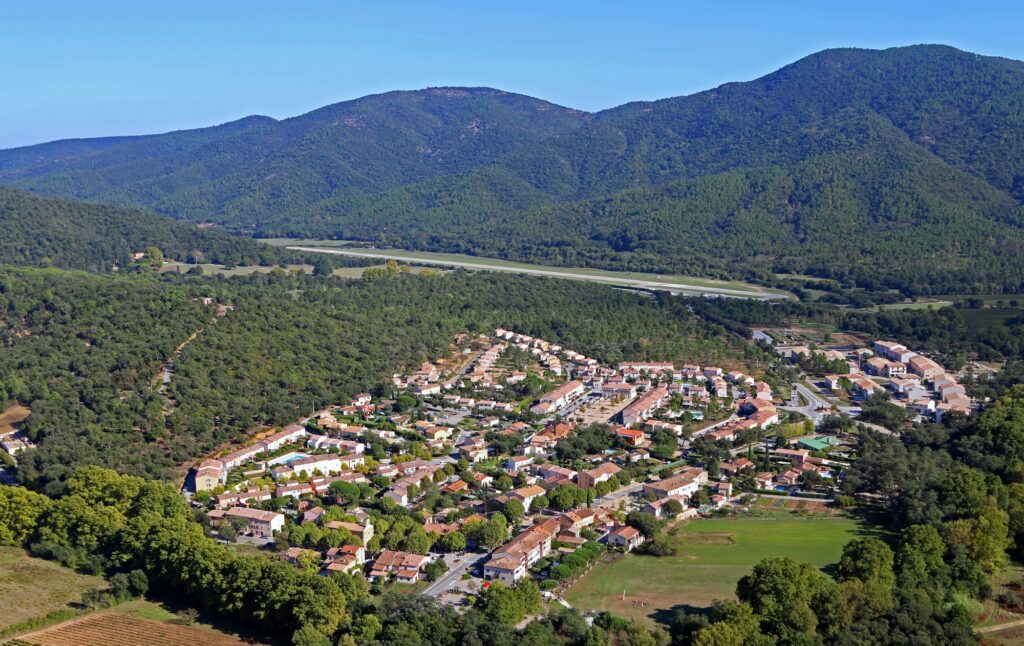
La Mole
Meeting a happy valley
The La Mole valley blossoms to the rhythm of nature, as if untouched by time. The village, a starting point for contemplative walks, has many secrets to reveal.
An identity to preserve
La Mole cultivates the tranquility of a small Provencal village set in the middle of nature, but defends this advantage with passion. For if La Mole is the south-western gateway to the Gulf of Saint-Tropez, let it be known that it belongs to the Maures massif! An aerial view of the village, immersed in an exceptional green setting, confirms this assertion. The commune’s motto is engraved beneath the sundial of its lovely church: “Souviens-toi de vivre” (“Remember to live”). The original village and its renowned restaurants have seen their population triple in recent years, with a successful expansion; but now it’s enough! No one is to encroach on the path leading to the discreet chapel of Sainte-Magdeleine. Nothing must disturb the flow of the river as it makes its way through vineyards and reeds: nature remains sovereign.
An unforgettable panorama over an ocean of greenery
At the other end of the village, the château is proud to have been the childhood home of Antoine de Saint-Exupéry, who happily described the area in Le Petit Prince. Opposite, a sign of destiny, the airport runway, interrupted by a stream: La Mole. Following the bridge over it, a road winds its way across the marvellous plain, land of the transhumance of goats and sheep, reaches the Pachacaïd accommodation complex, then rises, bend after bend, towards the Col du Canadel. We’ll leave aside the extraordinary sea-side view and turn our gaze to the extraordinary valley, its renowned vineyards lining the road that follows the drailles to the surrounding peaks, the wild streams, the smell of humus, porcini and eucalyptus in the surrounding forests. And then, in the distance, a silver-blue speck in this immensity of greenery.
From the Verne dam to the silence of the Chartreuse
This oasis in the Maures is the Verne dam. This body of water, fed by the Verne River, is home to families of grey herons and cormorants; in autumn, it becomes a haven for migratory birds; in spring, water turtles bathe in the improvised waterfalls, while wild boar and foxes look on in amusement: it’s like being in the Alps. Yet it’s this site that supplies freshwater to the saltwater communities of the Gulf, just a few miles away. Although swimming and boating are forbidden, the left bank path leads walkers and keen mountain bikers to the Chartreuse de la Verne, a monastery dating from 1170 and a superbly restored historic monument. This timeless place is inhabited by fifteen cloistered nuns who respect the law of silence. Yes, the La Mole area still has many secrets to conceal…
A little background
The terroir of La Mole is mentioned in 1008, in a charter from the Abbey of Saint-Victor in Marseille. The medieval village of Sainte-Madeleine was built on a basalt peak to the west of the Maravieille plateau. By the end of the 12th century, the territory of La Mole had become part of the estate of the Carthusian monks of La Verne. The area was deserted by the end of the 14th century. Despite an attempt to repopulate the area, it remained uninhabited until the 19th century. In 1770, the seigneury of La Mole was acquired by Chevalier Emmanuel Boyer de Fonscolombe, Conseiller du Roy, from Joseph-Jean-Baptiste de Suffren, Marquis de Saint-Tropez. The current village was created in the 19th century.